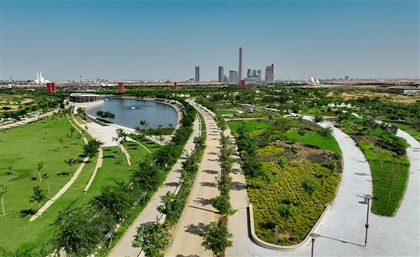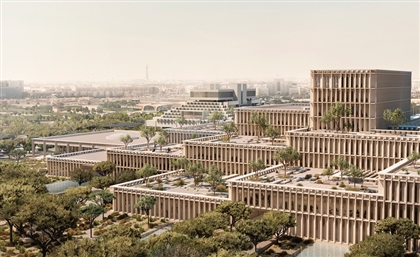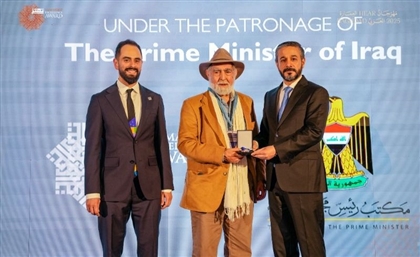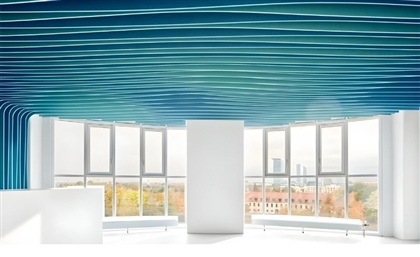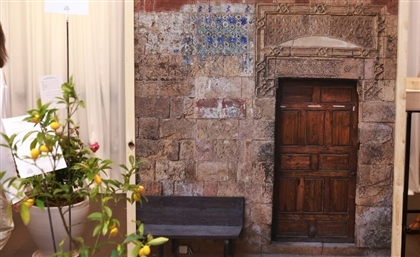Saudi's Ithra Celebrates Date Palm Legacy Launching 'Baseqat' Exhibit
Ithra unveils Baseqat: The Palm Tree Exhibition, celebrating the date palm’s cultural, architectural, and ecological legacy.
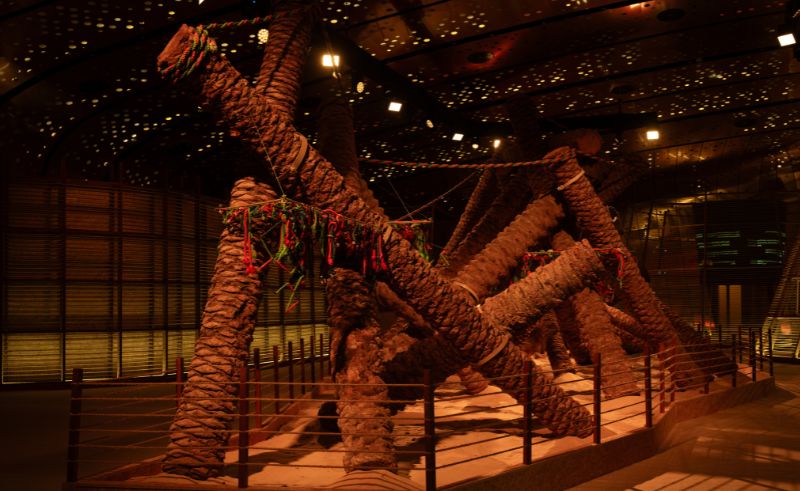
At the King Abdulaziz Center for World Culture (Ithra) in Dhahran, Baseqat: The Palm Tree Exhibition opens on 10 October 2025 as part of the wider Khoos Initiative, a programme dedicated to reinterpreting traditional palm-based crafts through contemporary design. Curated by Samer Yamani and Razan Masri, the exhibition transforms Ithra’s Great Hall into a spatial exploration of the date palm — a living symbol of endurance, ingenuity, and design intelligence. Featuring 15 works by 25 artists, it examines the palm’s role as both a material and cultural cornerstone of the Arabian Peninsula, tracing its influence across architecture, ecology, and craft.
The exhibition’s design takes its cue from the Qur’anic verse, “And towering palm trees loaded with clustered fruit” (Surah Qaf:10). The curators translate this poetic imagery into a series of areesh-inspired pavilions, constructed from palm wood, ropes, and fibres. These structures echo traditional palm-frond shelters once found across the region—spaces where craft, community, and climate-conscious design met in harmony.
Divided into six thematic zones—Oasis, Roots, Trunk, Fronds, Dates, and the Lab—the exhibition unfolds as a contemporary reimagining of the palm’s anatomy. Each section draws a line between the tangible and the symbolic: the palm as architecture, as ecology, and as a vessel of memory. Within these spaces, visitors encounter both crafted artefacts and conceptual installations that recontextualise a tree central to desert survival and design ingenuity. The exhibition also includes the Lab for experimentation and hands-on workshops, as well as an amphitheatre where filmmaker Mahmoud Kaabour’s short documentary “Sa’fa” will be showcased.
Among the highlights is Fatimah Al Nemer’s “Al-Kar”, a woven rug created with local craftswomen that transforms palm fibres into an archive of shared memory. Mohamed Amine Hamouda’s “Bouhattam” uses waste from oases to reflect on adaptation and ecology, while Daniel Valero – Mestiz (Mexico) merges rural tradition and modern design in his palm-woven La Cabra Chair. Abdulla Buhijji and Noor Alwan (Bahrain) reinterpret a folkloric ritual in Toob Toob Ya Bahar, Yasmine Sfar and Mehdi Kebaier (Tunisia) showcase Tmar (set of three hand-carved spheres), and Shahira Fahmy (Egypt) unveils Lucida Restaurant and Bar Wall, where palm leaves form a sculptural interplay of light and texture.
Further works include Sumaya Shelbi (Saudi Arabia) with Palm Ladies, and Bashaer Hawsawi (Saudi Arabia), who presents The Chain that Rebelled Against the Earth and Holy Thirst 4, exploring memory, belonging, and the sacred value of handcraft.
Elsewhere, Obaid Alsafi’s award-winning Palm in Eternal Embrace meditates on resilience and climate change, while Amina Agueznay (Morocco), Gabriela Sagarminaga Roldán (Spain), and Carolin Schelkle (Germany) each explore the palm’s contemporary material potential in works that span sculpture, fibre, and installation.
“The exhibition invites makers, families, and young learners to take part in a rooted practice we continue to build together,” says Farah Abushullaih, Head of the Ithra Museum. “In doing so, palm wisdom is carried hand to hand, generation to generation—renewing heritage through care, creativity, and community-led continuity.”
Part of the Khoos Initiative, Baseqat extends beyond the exhibition itself, incorporating a residency programme (3–14 October) and a series of commissions by regional and international designers. Together, they reexamine the palm not only as a motif of the past but as a living material language—sustainable, adaptive, and inseparable from the architecture of life in the Arabian Peninsula.




